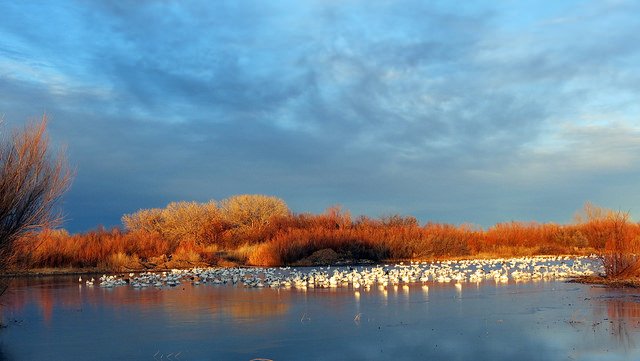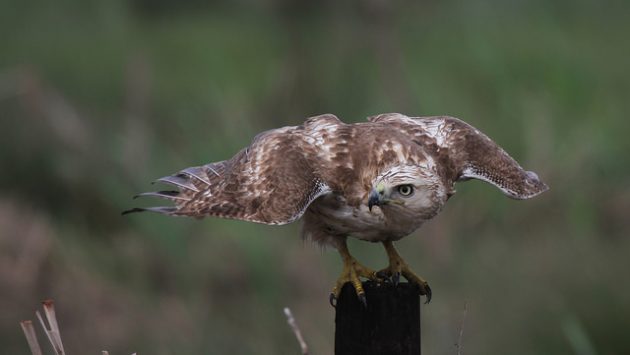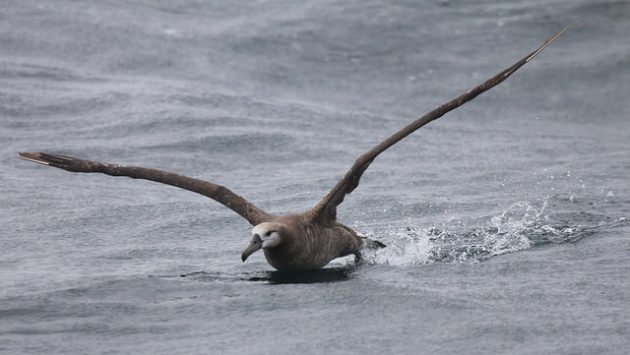
In a recent post, Corey listed five things to do when it is too cold to go birding and one of those things is planning birding travel. Here in Portland, Oregon, it is more frequently too rainy rather than too cold to go birding, at least comfortably. Regardless, planning trips is one way to do something birding-related without getting cold or wet.
But it helps to know what kind of birder you are and all of us are different. I will use myself as an example. With a wife and four year-old daughter, most of my travel includes only incidental birding, but once or twice a year I try to go somewhere for a couple of days of dedicated birding.
To keep things relatively close to home and reasonably-priced, I have limited myself to birding in the United States, creating my own birding area consisting of all 50 states and the U.S. territories such as Puerto Rico and the U.S. Virgin Islands. With a country so vast and ecologically diverse, I figure I have at least a few more decades of trips to do. Indeed, eBird tells me that I have yet to submit a checklist from approximately 20 states. I haven’t even been to all of the best national wildlife refuges for birding.
I am a westerner who has lived in San Francisco and Portland my entire birding life. Thus, my “good birds” are likely the opposite of an eastern birder. According to eBird, the chronology of my life list includes White-Headed Woodpecker at No. 10, Mountain Quail at No. 11, Wandering Tattler at No. 41, and Black Oystercatcher at No. 45. But Northern Cardinal, Catbird, and White-throated Sparrow do not appear until the 270s, during a visit to Central Park while on business trip to New York City. Geography is destiny.
Given my west coast experience, I have made dedicated birding trips to several of the more predictable birding hotspots. They include:
Southern Florida, with stops at places such as J. N. Ding Darling NWR, Corkscrew Swamp Sanctuary, Big Cypress National Preserve, Loxahatchee NWR, and Everglades National Park. Lifers included Wood Stork, White-eyed Vireo, and Limpkin.
Bosque del Apache NWR in New Mexico. Lifers includes Gambel’s Quail and Neotropic Cormorant, but the real highlights were the morning fly-out of Sandhill Cranes and the evening fly-in of Snow Geese.
Northern Gulf Coast of Texas, with stops at Anahuac NWR, Brazoria NWR, and Aransas NWR. Lifers included White-tailed Hawk, Caracara, and Whooping Crane.
Northern Ohio for the Biggest Week in American Birding, with visits to Magee Marsh and Ottawa NWR. Lifers included Cape May, Tennessee, Blackburnian, Chestnut-sided, Blackpoll, Kentucky, Canada, and Blue-winged warblers. It truly is the “Warbler Capital of the World.”
Southern Arizona, including visits to Ramsey Canyon Preserve and Patagonia-Sonoita Creek Preserve. Lifers included Painted Redstart, Sulphur-bellied Flycatcher, Arizona Woodpecker, and Rivoli’s, Violet-crowned, Lucifer, and Broad-billed hummingbird.
Rio Grande Valley of Texas, including stops at Santa Ana NWR and Laguna Atascosa NWR. Lifers included Harris’s Hawk, Great Kiskadee, Green Jay, Plain Chachalaca, and Ringed and Green kingfishers. That visit was prompted by the threat of a border wall through Santa Ana NWR.
Although not a birding trip, before we moved from San Francisco to Portland, my wife and I did a long road trip across the United States, covering 12,000 miles and 34 states, from California to Florida to Maine to Montana. That trip resulted in 88 lifers in limited birding. I’ve also been on pelagic birding trips on both coasts, out of Half Moon Bay and Monterey, California; Newport, Oregon; and Hatteras, North Carolina.
I mention these trips because, along with other trips and experiences closer to home, they inform my research into my future birding travel. Your prior trips will inform your birding travel planning too.
(Additionally, all of these trips were worthwhile and every birder should ultimately go to Florida, Arizona, and Texas, but if you haven’t been to the Biggest Week in American Birding in Ohio, you should strongly consider going. And that’s a recommendation from someone who has been to just one birding festival and tends to bird alone.)

After years of birding, I now have a good sense of what I enjoy as a birder. For example, not much can beat the experience of seeing a Bald Eagle scare up thousands of Snow Geese at Sacramento NWR. The morning fly-off of Sandhill Cranes from a frozen wetland at Bosque del Apache NWR is a spectacle, well worth frigid temperatures. Standing in the shadow of a historic lighthouse watching Great Frigatebird, Red and White-tailed tropicbird, Laysan Albatross, and Red-footed Bobby glide by at Kilauea Point NWR is remarkable. There’s little better than seeing an American Dipper work a rocky stream in Tuolumne Meadows in Yosemite National Park, a near-perfect combination of bird and location. (Another is California Condor in the Grand Canyon.)
In contrast, one of my lifers in 2017 was an Emperor Goose in the Bay Area. That bird stuck around for a while, invariably associating with some Canada Geese on a specific fairway on a specific golf course near Half Moon Bay. On a business trip to San Francisco, I drove down the coast, found the designated location a few yards from a parking lot and quickly picked out the wayward goose. It was not one of my more memorable birding experiences, although afterwards I birded a familiar patch (Pillar Point Harbor), where I submitted eBird checklist No. 188 for that location and thoroughly enjoyed myself.
From all of this, I have determined that I am (generally) more interested in: the birding experience than the latest tick on my life life; seeing birds where they “belong” rather than vagrants far from home; and large concentrations of birds, particularly waterfowl.
Of course, these are mere personal preferences and others surely have different sets of preferences that inform their birding. To those who long to visit Attu to see mega-rarities, I wish you well, but that is not on my bucket list.
My current criteria for a dedicated birding trip are having a good probability of seeing several new birds or seeing a birding spectacle (e.g., Red Knots and other shorebirds feasting on horseshoe crab eggs in Delaware Bay). I particularly enjoy birding national wildlife refuges, so I try to include at least one on each trip. A direct flight from Portland is also a plus, as is seeing new parts of America. For me, it seems the birding location is as important as the birds.
There are a number of trips on my bucket list, but here are three:
Platte River, Nebraska. The unique sounds of Sandhill Cranes are amazing, and I’ve only seen small flocks that are a tiny fraction of the numbers that visit the Platte River in March.
Nome, Alaska. I am fascinated by the thought of birding on the tundra and along the Bering Sea. Of course, there are also many potential lifers that are essentially impossible to see in outside of Alaska, at least in the United States. And when else would I ever get to see Nome?
Prairie Pothole Region of the United States, primary in North and South Dakota, Minnesota, and Montana. I wrote about Waterfowl Production Areas in this region (America’s duck factories) and want to visit, though the details of visiting an area that spans 100,000 square miles are to be determined.
Several of these are much more than just a weekend so they will have to wait, perhaps for years, but that doesn’t mean I can’t start planning. In the meantime, I will satisfy myself with local trips or quick visits to areas served by direct flights from Portland. There is always someplace to go, even if you limit yourself to the United States.
Birding travel is all about personal preferences and mine are surely different than others. The eventual trips are great, but planning can be fun too, particularly in February, when it is often too cold or rainy to bird.

Photos: Jason Crotty (Bosque del Apache NWR, Anahuac NWR, Pacific Ocean off Oregon coast).













Leave a Comment